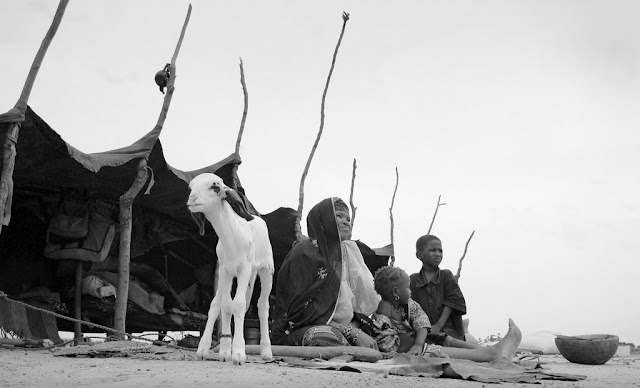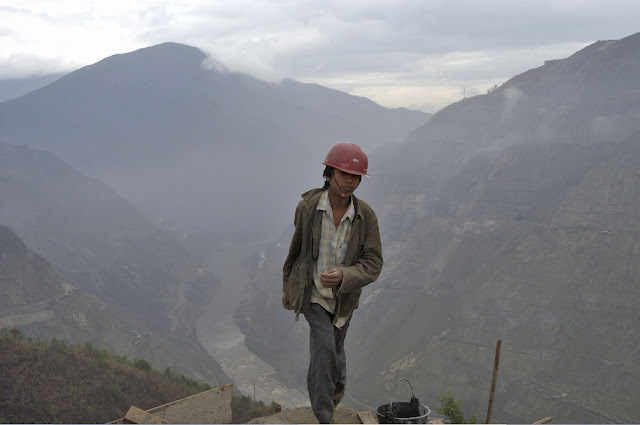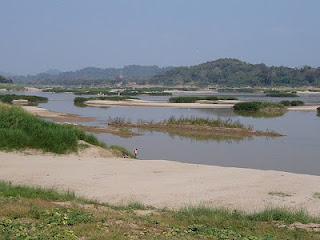Showing posts from category Asia.
-
Demographic Trends and Policy Implications in Northeast Asia
›Japan, the People’s Republic of China, Taiwan, and Korea are all aging societies. On February 26, the Wilson Center’s Asia Program hosted an event to consider issues related to demographic change in Northeast Asia. What will be the effect of aging on economic output in these countries? Can welfare states established for much younger populations in developed economies survive the stress of demographic change, or will governments in Northeast Asia need to radically rethink the provision of care to the elderly? Can immigration reform alleviate many of the problems associated with more elderly populations in Northeast Asia? And will current demographic shifts foster more benign or more belligerent interstate relations in the region?
At the event, Harvard University School of Public Health research associate Jocelyn Finlay noted that demographic trends are often overlooked in explaining economic growth in Japan, South Korea, and Taiwan between 1960 and 2000. Demographers estimate that decreases in infant mortality and adult fertility levels, which resulted in an increase of workers relative to dependents, accounted for up to a third of economic growth in these countries during this period. As the age cohort born after 1945 enters into retirement, however, the increase in dependents relative to new workers will be a contributing factor to sluggish growth. Finlay mentioned that pro-natalism and pro-immigration policies, and policies that encourage women and the elderly to participate in the workplace, could help to mitigate the effects of an aging society on economic growth but noted that such policies were all difficult to implement.
These difficulties were examined in further detail by Ito Peng, professor of sociology at the University of Toronto. Peng noted that East Asian democracies have traditionally maintained very lean welfare states, relying instead on private institutions such as extended families to carry much of the burden of, for example, care for the elderly. However, public provision of care for the aged is increasing in these countries, where the nuclear family has become the norm. Governments must actively pursue strategies to increase the number of workers and therefore income tax revenues to pay for the resulting increases in public spending.
However, policies intended to expand the tax base often have unintended consequences. For example, encouraging people to have larger families often has the effect of forcing mothers to stay at home to care for their children, depriving the labor force of a productive worker in the short term. To address this problem, Japan and South Korea have increased the level of public childcare provision. However Peng believes that there needs to be greater integration between the private and public spheres to make Northeast Asian workplaces, still a sphere of male dominance, friendlier to working mothers. Companies that insist on significant overtime duties could, for example, find ways to let working parents maintain a work-life balance that allows them to personally care for their children. Northeast Asian countries can also institute pro-immigration policies to bring more young workers from abroad. However, sustained immigration policies are also difficult in nations, like Japan and South Korea, without a history of accepting newcomers.
For Richard Cincotta, demographer-in-residence at the Stimson Center and consultant for the Wilson Center’s Environmental Change and Security Program, demographic change will be a major factor in determining the way states in Northeast Asia approach security. To illustrate the relationship between demography and security, Cincotta noted that Japan’s militarist period in the 1930s and 1940s occurred when its population was younger, more ambitious, and more energetic. With older societies, countries in Northeast Asia will be able to recruit fewer males for the military, meaning their foreign policies may shift more towards caution.
The exception, however, is China, where the number of potential male recruits far outnumbers those of its neighbors. This means that Japan, South Korea, and Taiwan will come under more pressure to intensify the use of human capital by promoting more professionalized and better equipped militaries. They will also have incentives to resolve any differences with their key ally, the United States, as well as among each other. Cincotta suggested that we may be seeing the start of a new type of Cold War, where Pacific Northeast Asian states cooperate to check a potential Chinese regional hegemon.
Bryce Wakefield is a program associate with the Asia Program at the Woodrow Wilson Center.
Photo Credit: “Mouth wide open,” courtesy of flickr user Azzazello. -
Carl Haub, Behind the Numbers
Taiwan’s Birth Rate Lowest Recorded in History
›January 27, 2011 // By Wilson Center StaffExcerpted from the original article, by Carl Haub, on the Population Reference Bureau’s Behind the Numbers blog:
Taiwan’s government has just announced that the country’s total fertility rate (or TFR, the average number of children a woman would bear in her lifetime if the birth rate of a particular year were to remain unchanged) in 2010 was the lowest in its history at 0.91 children per woman. It’s the lowest rate any country has ever reported in history. The announcement itself is a bit of a projection since births have been officially reported only through November 2010. The country’s TFR had declined to 1.1 in 2005 and had remained there through 2009.
The rather spectacular drop in 2010 was due to an additional reason: 2010 is the Year of the Tiger on the Chinese calendar, beginning on February 14. The Tiger year is particularly inauspicious for births since Tigers, while seen as brave, are also seen as headstrong and possibly difficult to work with. It is quite common for employers to consider the zodiac of job applicants and Tigers may be avoided so that parents have some concrete reasons to avoid having a child in Tiger years. While there has been a lot of concern over the demographic situation for some time, Taiwan’s President Ma Ying-jeou has now called for measures to increase the birth rate to be raised to the “national security level.”
Continue reading on Behind the Numbers.
Sources: Asia Times, USA Today.
Photo Credit: Adapted from “070923 sleeping baby,” courtesy of flickr user Wowo and her families. -
Elizabeth Malone on Climate Change and Glacial Melt in High Asia
› “There’s nothing more iconic, I think, about the climate change issue than glaciers,” says Elizabeth Malone, senior research scientist at the Joint Global Change Research Institute and Pacific Northwest National Laboratory. Malone served as the technical lead on “Changing Glaciers and Hydrology in Asia: Addressing Vulnerability to Glacier Melt Impacts,” a USAID report released in late 2010 that explores the linkages between climate change, demographic change, and glacier melt in the Himalayas and other nearby mountain systems.
“There’s nothing more iconic, I think, about the climate change issue than glaciers,” says Elizabeth Malone, senior research scientist at the Joint Global Change Research Institute and Pacific Northwest National Laboratory. Malone served as the technical lead on “Changing Glaciers and Hydrology in Asia: Addressing Vulnerability to Glacier Melt Impacts,” a USAID report released in late 2010 that explores the linkages between climate change, demographic change, and glacier melt in the Himalayas and other nearby mountain systems.
Describing glaciers as “transboundary in the largest sense,” Malone points out that meltwater from High Asian glaciers feeds many of the region’s largest rivers, including the Indus, Ganges, Tsangpo-Brahmaputra, and Mekong. While glacial melt does not necessarily constitute a large percentage of those rivers’ downstream flow volume, concern persists that continued rapid glacial melt induced by climate change could eventually impact water availability and food security in densely populated areas of South and East Asia.
Rapid demographic change has potentially factored into accelerated glacial melt, even though the connection may not be a direct one, Malone adds.
Atmospheric pollution generated by growing populations contributes to global warming, while black carbon emissions from cooking and home heating can eventually settle on glacial ice fields, accelerating melt rates. Given such cause-and-effect relationships, Malone says that rapid population growth and the continued retreat of High Asian glaciers are “two problems that seem distant,” yet “are indeed very related.”
The “Pop Audio” series is also available as podcasts on iTunes. -
The Role of Population Dynamics in Climate Adaptation
›December 21, 2010 // By Wilson Center StaffThis post is a synthesis of a panel discussion at the UNFPA Population Dynamics and Climate Change conference in Mexico City with Marcia Castro, of the Harvard School of Public Health; Heather D’Agnes, of USAID; and Lori Hunter, of the University of Colorado at Boulder.
It is well-known that environmental change — including climate change — has important impacts on human health. However, it is less well understood how health systems shape the responses of individuals and households to environmental change. Population dynamics — such as fertility, migration, and mortality and morbidity — influence community health and greatly affect community resilience in the face of environmental changes, including the capacity to adapt to climate change.
Mortality and Morbidity
Morbidity and mortality dramatically shape a household’s ability to adapt its livelihood strategies to a changing climate. For example, in areas of high HIV prevalence, such as sub-Saharan Africa, adult mortality seriously undermines livelihood options. In the face of such loss, the household’s reliance on local natural resources intensifies. If environmental change reduces the amount of available resources, the household has fewer options for energy and sustenance.
Morbidity also affects adaptive capacity, and morbidity itself can be shaped by environmental change. For example, environmental scarcity can increase poverty, which can lead to an increase in risky transactional sex, further fueling the HIV pandemic. Malnutrition resulting from drought and environmental shocks can suppress the immune systems of HIV-positive people, making them more vulnerable to illness and less able to adapt to other external changes.
Fertility and Family Planning
Healthier households are more resilient households, so increasing access to health services, including reproductive health services, is essential for building adaptive capacity. High fertility poses challenges to a family’s livelihood and has negative health effects on women and children. Providing reproductive health services is an effective way to improve the capacity of these vulnerable groups to adapt to climate change. For example, a recent study argues that lowering fertility rates in the Himalayan region could increase community resilience to the predicted fluctuations in water quantity.
However, there is a high level of unmet demand for contraception across the globe. How can community adaptation programs help meet this need? Importantly, research from the Philippines suggests that integrating population, health, and environment programs in a package approach to community development is more effective than single-sector interventions. Including family planning and reproductive health services in community-based climate adaptation programs could not only more effectively meet the community’s needs, but could also improve its adaptive capacity better than health or climate programs alone.
Migration
Another population process, migration, can both impact health and affect the capacity for adaptation. For example, internal migration in the Brazilian Amazon appears associated with the spread of malaria, which negatively impacts the adaptive capacity of households. To mitigate climate change’s health impacts, states should more effectively plan settlements and health systems, including health impact assessments for infrastructure and development projects. (Editor’s Note – northern Nigeria and Niger present another example of similar climate-related migratory patterns that significantly impact health and economic resilience.)
In summary, the scientific evidence is clear that population dynamics — such as mortality, fertility, and migration — and environmental trends are linked. Projects intended to improve a community’s ability to adapt to a changing climate should consider and address these linkages in their design and implementation.
Sources: Foundation for Environmental Conservation, UNFPA, USAID.
Photo Credit: “Toureg family in Niger,” courtesy of flickr user ILRI. -
Managing the Mekong: Conflict or Compromise?
›December 1, 2010 // By Russell SticklorAt nearly 5,000 kilometers long, the Mekong River is one of Asia’s most strategically important transboundary waterways. In addition to providing water for populations in the highlands of southern China, the Mekong helps support some 60 million people downstream in Southeast Asia, where the river is a key component of agricultural production and economic development.
In recent years, however, the Mekong has emerged as a flashpoint for controversy, pitting China against a coalition of downstream nations that includes Thailand, Laos, Cambodia, and Vietnam. The countries of the Lower Mekong argue that Beijing’s construction of multiple dams on the Upper Mekong is robbing them of critical water resources, by decreasing both the quality and quantity of water that makes it through Chinese floodgates and spillways. China, however, mindful of soaring energy demand at home, has continued its campaign to harness the hydroelectric potential of the Upper Mekong and its tributaries – but at what cost to the environment and Beijing’s relationships with Southeast Asia?
China’s Hand on the Faucet
China’s total energy demand just recently passed the United States and is expected to continue to increase in the near-term – by 75 percent over the next 25 years, according to the International Energy Agency.
As a result, Beijing has been looking to bolster its energy security by reaching out to develop energy resources in Africa, Latin America, and the Middle East, as well as along the Mekong and in the East and South China Seas.
In that context, China’s aggressive hydroelectric development of the Upper Mekong — known in China as the Láncang Jiang (shown in the boxed area of the map at right) — makes perfect sense. The river’s sizeable elevation drops make it a rich source of energy; already, 15 large-scale dams have either been completed or are under construction on the Upper Mekong in Tibet and Yunnan.
Those dams also provide China with enormous geopolitical leverage over downstream nations. With little more than the flick of a switch, the Chinese government could substantially curtail the volume of flow entering the Lower Mekong basin. Doing so would of course be tantamount to an act of war, since depleted flow volumes in the Lower Mekong would hinder crop irrigation, jeopardize food security, and endanger the health of the region’s economically critical freshwater fisheries, which are among the world’s most productive. Chinese floodgates and spillways essentially give Beijing de facto control over Southeast Asia’s water security.
The View Downstream
To date, China has never threatened to deliberately reduce the flow of the Mekong to its downstream neighbors. Nevertheless, the perception of threat in Southeast Asian capitals remains high.
Already, a number of the region’s governments — represented formally through the Mekong River Commission, a 15-year-old organization that China still has not joined as a full-fledged member — have complained that completed or in-progress Chinese dams are resulting in less water entering their countries, a phenomenon that becomes particularly pronounced during periods of drought, as observed this summer. Further, there is also the issue of water quality. Since Chinese dams trap silt being flushed out of the Himalayas, that nutrient-rich material cannot be carried downstream, where it historically has helped create fertile soils in the floodplains of the Lower Mekong basin.
Quality and quantity concerns aside, there are also structural issues concerning how Beijing goes about its business on the Upper Mekong. Since it is only a “Dialogue Partner” to members of the Mekong River Commission, China is not required to seek approval from downstream nations on hydroelectric development of the river’s Chinese stretch, even though that development has both direct and indirect implications for water security in the Lower Mekong basin. China has even shown a penchant for deliberate secrecy as it develops its stretch of the river, choosing to share a minimal amount of hydrological data with downstream neighbors and typically refraining from even announcing new dam projects.
“The Security Implications Could Hardly Be Greater”
Given its geographic position, Cambodia is particularly vulnerable to China’s stewardship decisions. With one of the poorest populations in Southeast Asia and also one of the highest fertility rates, at 3.3 births per woman, the potential for water scarcity issues is real. By mid-century, its population is projected to jump from its current 15 million to nearly 24 million.
“The government of Cambodia will be entirely at the mercy of Beijing,” said Wilson Center Scholar and Southeast Asian security expert Marvin Ott. “For Cambodia, the question becomes how they can curry China’s favor so as to avoid coercive use of the Mekong — or find some way of exerting counter-pressure on Beijing.”
Overall, population for mainland Southeast Asia is projected to rise from its current 232 million to 292 million by 2050. This growth will require increased agricultural output across the region and thus increased reliance on the waters of the Lower Mekong. The Lower Mekong nations’ shared dependency on the river and China’s continued unilateralism in the Upper Mekong could have serious repercussions for the region, said Ott:The security implications could hardly be greater for the downstream states. With the dams, China will have literal control over the river system that is the lifeblood of Laos, Cambodia, and Vietnam. The power this gives China is equivalent to an invasion and occupation of a country by the Chinese army.
For its part, the PRC maintains that water woes in the Lower Mekong are not its doing. In response to the chorus of Southeast Asian claims that China diverts or stores more than its fair share of water, Beijing’s typical refrain has been that blame for low water levels downstream lies not with Chinese water resource management but with heightened precipitation variability associated with climate change. Chinese water officials also contend that the Lower Mekong countries’ complaints are misdirected because water from the Chinese-controlled sections of the Upper Mekong basin accounts for less than 20 percent of the Mekong’s total flow volume by the time the river reaches its natural outlet in the South China Sea.
There are some indications, however, that China may be experimenting with a more open approach to engaging downstream nations. Earlier this year, China overturned precedent by offering top Southeast Asian government officials a tour of what had once been a top-secret hydro project, the mammoth Xiaowan dam. Some critics insisted Beijing’s fear of growing U.S. influence in the Lower Mekong helped motivate the rare show of transparency, while others said it was a means to curry favor with Southeast Asian nations so that they would support China’s controversial resource-development strategies in the South China Sea. Yet regardless of motive, Beijing’s move away from secrecy – if sustained – could do a great deal to smooth over regional tensions.
Dammed If You Do, Damned If You Don’t
Beyond some limited transparency, Beijing also hopes to mitigate concerns about development of the Upper Mekong by offering funding or logistical support for similar large-scale hydroelectric facilities on the Lower Mekong. The move has been largely welcomed by the Mekong River Commission countries, which envision dams of their own generating much-needed energy input for national grids, accelerating continued economic modernization, and enhancing flood control. As of 2009, there were 12 dam projects for stretches of the Mekong south of the Chinese border and many more planned for key tributaries.
The danger in such deal-making is that the environmental costs will be lost in the shuffle. A series of major dams would fundamentally alter the Mekong’s hydrology, which could lead to the degradation of sensitive riverine ecosystems, the disruption of upstream migratory routes for fish that serve as local dietary staples, and the decline of fresh water fisheries that form the backbone of many local economies.
Given the long-term effects on the food, environmental, and economic security of the Lower Mekong heartland, Beijing’s attempt to ease water tensions with a new round of dam construction may end up doing far more harm than good. Unfortunately, with both China and the Mekong River Commission countries currently viewing the dam proposals as something of a win-win, planning and construction are likely to move forward over the coming years.
Sources: Financial Times, Foreign Policy, International Institute for Strategic Studies, Los Angeles Times, Mekong River Commission, National Geographic, New Asia Republic, Phnom Penh Post, Population Reference Bureau, Stimson Center.
Photo Credits: “Xiaowan Dam Site (Yunnan Province, China, 2005),” (Top) courtesy of flickr user International Rivers; Map (Middle) courtesy of International Rivers; “Thailand – Isaan, Mekong River,” (Bottom) courtesy of flickr user vtveen. -
Developing a Blueprint for Addressing Glacier Melt in the Region
Changing Glaciers and Hydrology in Asia
›“Glacier melt is part of larger hydrologic and climate systems, so effective programs will be cross-sectoral and yield co-benefits,” said Elizabeth L. Malone, senior research scientist at the Joint Global Change Research Institute and Pacific Northwest National Laboratory, speaking at the Wilson Center on November 16. “Looking more closely at glacier melt, we come to understand that upstream actions and choices have a potentially huge effect on downstream communities,” added Kristina Yarrow, health advisor at the U.S. Agency for International Development’s Asia and Middle East Bureaus.
Malone and Yarrow were joined by Mary Melnyk, senior advisor for natural resource management at USAID’s Asia and Middle East Bureaus, to discuss the agency’s new report, “Changing Glaciers and Hydrology in Asia: Addressing Vulnerabilities to Glacier Melt Impacts,” prepared by Malone in collaboration with CDM International and TRG. “This report is a move towards mainstreaming climate change across the development portfolio to ensure enduring success of our investments,” Melnyk said.
Mainstreaming Climate Change
Providing information about the science, vulnerabilities, and current efforts to respond to environmental change and glacier melt in Asia, the new report also features a number of practical, cross-sectoral approaches to addressing glacial retreat in Asia that, if implemented well, could produce multiple benefits. The report highlights the complexity of the issues surrounding glacier melt in the region, and the critical need to prepare today for future environmental changes.
“Climate change in general, and glacier melt specifically, can potentially impact all sectors: economic growth, governance, and health,” Melnyk said. Because there is a lack of scientific knowledge on glacial retreat in Asia and limited financial and human resources to address these issues, it is critical to maximize results through programs that will provide environmental, health, and development co-benefits.
“The challenge is that, in practice, addressing issues of climate change and other environmental security issues still are not a part of the day-to-day business across sectors,” Melnyk said. This report is a first step in the right direction to raise awareness and action on these issues and “although there is uncertainty, we need to move forward – the time to act is now,” she concluded.
Multiple Sectors, Multiple Benefits
“Cross-sector collaboration and programs, when done correctly, can have a much greater impact than when doing a vertical program within a specific sector,” Yarrow said, stressing the importance of multidisciplinary approaches to address environment, health, and development issues. Understanding the health impacts of climate-related environmental change now can help prepare us to address these specific impacts in the future.
“On a global scale, there is indeed a relationship between population growth, environmental change, and development,” Yarrow said. In Asia, stress on water resources due to climate change and rapid population growth will likely exacerbate health problems caused by lack of clean water. Proactively expanding and improving programs that address the causes and effects of diarrheal disease and under-nutrition can help address these vulnerabilities and make communities more resilient.
“Finding innovative ways to improve access to and integrate family planning messages and services into climate adaptation programs will also yield some important co-benefits,” Yarrow said. Family planning can slow population growth, which could help reduce projected demand for water supplies, as well as potentially reduce the amount of water pollution.
Yarrow also added that “population growth affects glacier melt indirectly through the consumption of resources that exacerbate black carbon.” Black carbon, which is produced by cooking and heating with biomass fuels, contributes to regional climate change and severe health problems, including respiratory illness and pneumonia. Accompanied by efforts to promote alternative fuels, family planning could reduce black-carbon emissions, significantly improve health, and strengthen community resilience to climate change.
“Though challenging, integrating across sectors is absolutely essential – we’re not experts yet, but we’re definitely getting better,” Yarrow said. “Understanding and addressing the multiple issues like climate change, poor health, poverty, dependence on natural resources, and governance challenges that these communities are dealing with in a comprehensive and holistic fashion will improve results.”
Responding to Glacier Melt
“We simply do not have the kind of broad-scale knowledge that we would like to have,” Malone said. Current data on glacier melt is scarce and very few direct measurements of glacier volume exist, making calculations of glacier retreat difficult. Moving forward, it is critical to respond to this lack of information by improving regional scientific cooperation on glaciers, snowpack, and water resources in High Asia, and strengthening climate and water monitoring capacity.
“Even the smallest amounts of glacier-melt contribution correspond to the regions of the highest population, so any change in water supply has large implications,” Malone said. Glaciers may not be disappearing as fast as had been previously thought, but “climate change is happening in the Himalayas and is having an effect.”
“If systems – both human and ecological – are already stressed, they are less able to be resilient in the face of changes. But the good news is that we can take actions now that will be crucially important to how societies can respond in the future,” Malone said.
Implementing cross-sector projects can help to target places where environmental, economic, health, and even security issues overlap. Focusing on water resource management, ecosystems, and the needs of high-mountain communities, as well as mitigating climate change by reducing emissions of black carbon, can help reduce both direct and indirect vulnerabilities and improve resilience to future changes.
“The results of this report allow USAID and others to grasp the complexity of these issues, understand the critical gaps, and to respond to the changes in the glaciers to come,” Melnyk said. The next step is applying the knowledge gathered in the report to practitioners in the field and in policy discussions.
“A crucial role USAID can play is to link partners in the government and private sectors to build capacity and spark synergies among new initiatives to really integrate new initiatives with concerns about glacier melt,” Malone concluded.
Photo Credit: “Nepal Sagamartha Trek,” courtesy of flickr user mckaysavage. -
Food and Environmental Insecurity a Factor in North Korean Shelling?
›November 24, 2010 // By Schuyler NullJust two days before dozens of North Korean artillery shells fell on the island of Yeonpyeong off the west coast of Korea, a UN study reported that the DPRK was facing acute food shortages heading into the winter.
In a New York Times report, Choi Jin-wook, of the Korea Institute for National Unification in Seoul, called food “the number one issue.” While Choi just last month praised the resumption of food aid from the South to the North as a “starting point of a new chapter in inter-Korean relations,” she told the Times Wednesday that the North is “in a desperate situation, and they want food immediately, not next year.”
North Korea’s motives are notoriously indecipherable and this latest incident is no exception, but the regime has in the past sought to distract from domestic problems by inciting the international community (the sinking of the Cheonan being the other latest prominent example).
Infrastructure has always been primitive in the North under the DPRK regime, but the country’s tenuous food security situation was made worse this last year by an unusually long and severe winter followed by heavy flooding in the summer. Flooding was so bad during August and September, that the normally silent regime publically announced details of rescue operations around the northern city of Sinuiju. The joint FAO/WFP report put out by the UN does not predicate production will significantly recover in the next year and estimates an uncovered food deficit of 542,000 tons for 2010/11.
“A small shock in the future could trigger a severe negative impact and will be difficult to contain if these chronic deficits are not effectively managed,” Joyce Luma of the World Food Program told The New York Times.
For more on the severe weather events of this summer, including the flooding that impacted the DPRK and pushed the Three Gorge Dam to its stress limits in China, the impact of scarcity and climate change on the potential for conflict, and the intersection of food security and conflict elsewhere, see our previous coverage on The New Security Beat.
Sources: Christian Science Monitor, Food and Agriculture Organization, Los Angeles Times, The New York Times, UN, Washington Post, World Food Program.
Image Credit: Google Maps. -
Rare Earths Intrigue: In Response to Chinese Ban, Japan and Vietnam Make a Deal
›November 2, 2010 // By Schuyler NullThe BBC is reporting that Japan has reached an agreement with Vietnam that will help provide a secure supply of rare earth minerals, after China reportedly stopped exports to Japan during an ongoing territorial dispute last month.
China produces nearly all (97 percent, according to the GAO) of the rare earth minerals used around the world, minerals that are used in many advanced electronics including mobile phones, missiles, and key components of cleaner energy tech. Japanese companies are expected to gain exclusive exploration and mining rights in northwest Vietnam in exchange for technical assistance on nuclear reactors.
China’s reported export freeze on rare earths raised warning flags in the region as well as in Washington, where fears over exclusive supply of the crucial minerals have been growing for some time – particularly in the defense community. (Although Bloomberg reports a new Pentagon study says it’s not such a big deal after all.) Control over and access to resources has become an important concern in East Asian diplomacy, as population and consumption in the region rises. For more, check out The New Security Beat’s coverage of the many diplomatic fault lines at play between the lower Mekong countries, China, and the United States, rare earth minerals and green energy, and the conflict potential of future resource scarcity.
Sources: BBC, Bloomberg, Government Accountability Office, The New York Times, TechNewsDaily.
Image Credit: Adapted from “The Huc Bridge, Hanoi,” courtesy of flickr user -aw-.















